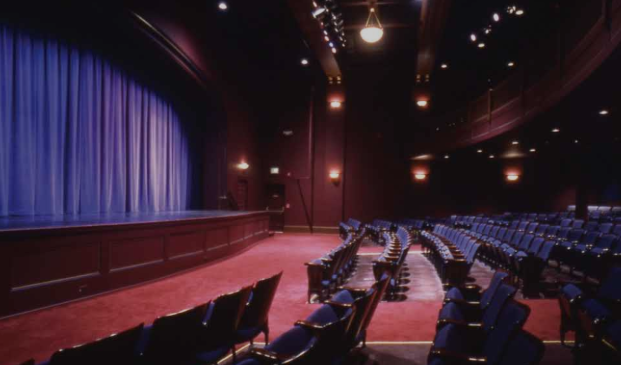Unveiling the Parallel Universes of "Citizen Kane" and "Ripley": A Cinematic Odyssey
- Resort and Travel

- Apr 22, 2024
- 3 min read
Updated: Apr 24, 2024
by Roy Webb
In the annals of cinematic history, two masterpieces stand as towering edifices of storytelling prowess: "Citizen Kane" (1941) and "Ripley" (2023). At first glance, separated by decades and thematic landscapes, these films may appear as distant as stars in different galaxies. However, upon delving deeper into their narratives, styles, and impacts, a mesmerizing parallel universe emerges, intertwining the destinies of Charles Foster Kane and Tom Ripley in a tapestry of intrigue and introspection.
Anti-Heroes: Both sagas orbit around enigmatic protagonists, Charles Foster Kane and Tom Ripley, whose magnetic charisma is only rivaled by their profound flaws. Orson Welles' portrayal of Kane and Andrew Scott's rendition of Ripley paint vivid portraits of individuals with murky pasts, insatiable ambitions, and a proclivity for subterfuge. These anti-heroes navigate the labyrinth of their own psyche, blurring the lines between right and wrong in their relentless pursuit of power and self-preservation.

Social Class and Identity: While "Citizen Kane" scrutinizes the corroding influence of wealth and authority, "Ripley" peels back the layers of high society, exposing the intricate dance of identity and belonging. Both narratives cast a critical eye on the facades maintained by the social elite, revealing the performances demanded by society's unforgiving gaze. In a world where status is currency, Kane and Ripley confront the existential quandary of authenticity versus assimilation, probing the depths of their souls amidst the glittering facade of privilege.
Psychological Tension and Suspense: The symphony of suspense reverberates through the halls of both "Citizen Kane" and "Ripley," orchestrated by the masterful manipulation of mystery and psychological intrigue. Whether unraveling the enigma of Kane's life or engaging in Ripley's intricate game of cat-and-mouse, audiences are ensnared in a web of uncertainty and apprehension. Each frame pulses with an electric anticipation, as the protagonists' inner demons collide with external forces, propelling the narrative towards its inexorable climax.

Visual Storytelling: In the realm of visual splendor, "Citizen Kane" and "Ripley" reign supreme, each weaving a tapestry of imagery that captivates the senses and ignites the imagination. Welles' pioneering cinematography in "Citizen Kane" laid the groundwork for the film noir genre, while "Ripley" embraces a sleek, modern aesthetic, punctuated by long takes and monochromatic allure. Through the lens of innovation, both films transcend mere spectacle, inviting audiences into a realm where every frame is a brushstroke on the canvas of cinematic artistry.
Exploration of the Human Condition: At their core, both "Citizen Kane" and "Ripley" serve as profound meditations on the human experience, plumbing the depths of identity, power, and the masks we don to navigate the complexities of existence. Through the prism of their narratives, audiences are confronted with the eternal struggle for self-discovery and the inexorable march of time. As Kane and Ripley grapple with the shadows of their own creation, we are compelled to confront our own reflections in the mirror of their journey.
A Tale of Two Directors:
In the realm of creative autonomy, Orson Welles and Steven Zaillian stand as titans, wielding the scepter of authorship over their respective masterpieces. While Welles exercised complete control over "Citizen Kane" as producer, director, and writer, Zaillian's vision for "Ripley" emanates from his multifaceted role as creator, writer, and director of the series.

Innovative storytelling is the beating heart of both endeavors, with "Citizen Kane" revolutionizing non-linear narrative and deep focus cinematography, while "Ripley" captivates audiences with its innovative use of black-and-white cinematography and labyrinthine plotlines.
Themes of power, corruption, and the American Dream pulsate through the veins of "Citizen Kane," while "Ripley" delves into the intricacies of identity, class, and the masks we don to conceal our true selves.
From the depths of cinematographic brilliance to the symphony of sound design, both films enrapture audiences with their visual and auditory splendor. Whether through Citizen Kane's groundbreaking use of sound or Ripley's haunting score, each note resonates with the echoes of cinematic history.
In the grand tapestry of influence, "Citizen Kane" casts a long shadow over the landscape of film, its innovative storytelling and cinematography inspiring generations of filmmakers. Similarly, "Ripley" emerges as a trailblazer in the realm of television, captivating audiences with its visionary storytelling and unparalleled craftsmanship.
In the final analysis, "Citizen Kane" and "Ripley" stand as twin pillars of cinematic excellence, testaments to the enduring power of storytelling to transcend time and space. As audiences embark on a journey through the parallel universes of Kane and Ripley, they are reminded of the indelible mark left by those who dare to push the boundaries of imagination and creativity.




Commentaires